The Art of Photography Composition: From Basic Principles to Advanced Techniques
Welcome to our comprehensive guide on photography composition. Whether you're a beginner just starting out or an enthusiast looking to elevate your work, this guide will provide you with practical techniques to create captivating visual stories through your lens.
Understanding Photography Composition: The Foundation
At its core, successful photography composition combines two essential steps:
- Identifying your subject: Clearly defining what you want viewers to focus on
- Guiding the viewer's eye: Creating a thoughtful visual path that naturally leads to your subject
These two elements determine whether your photograph successfully captures and maintains viewer attention.
How to Establish a Strong Subject in Your Composition
Here are five powerful techniques to emphasize your subject, often most effective when used in combination:
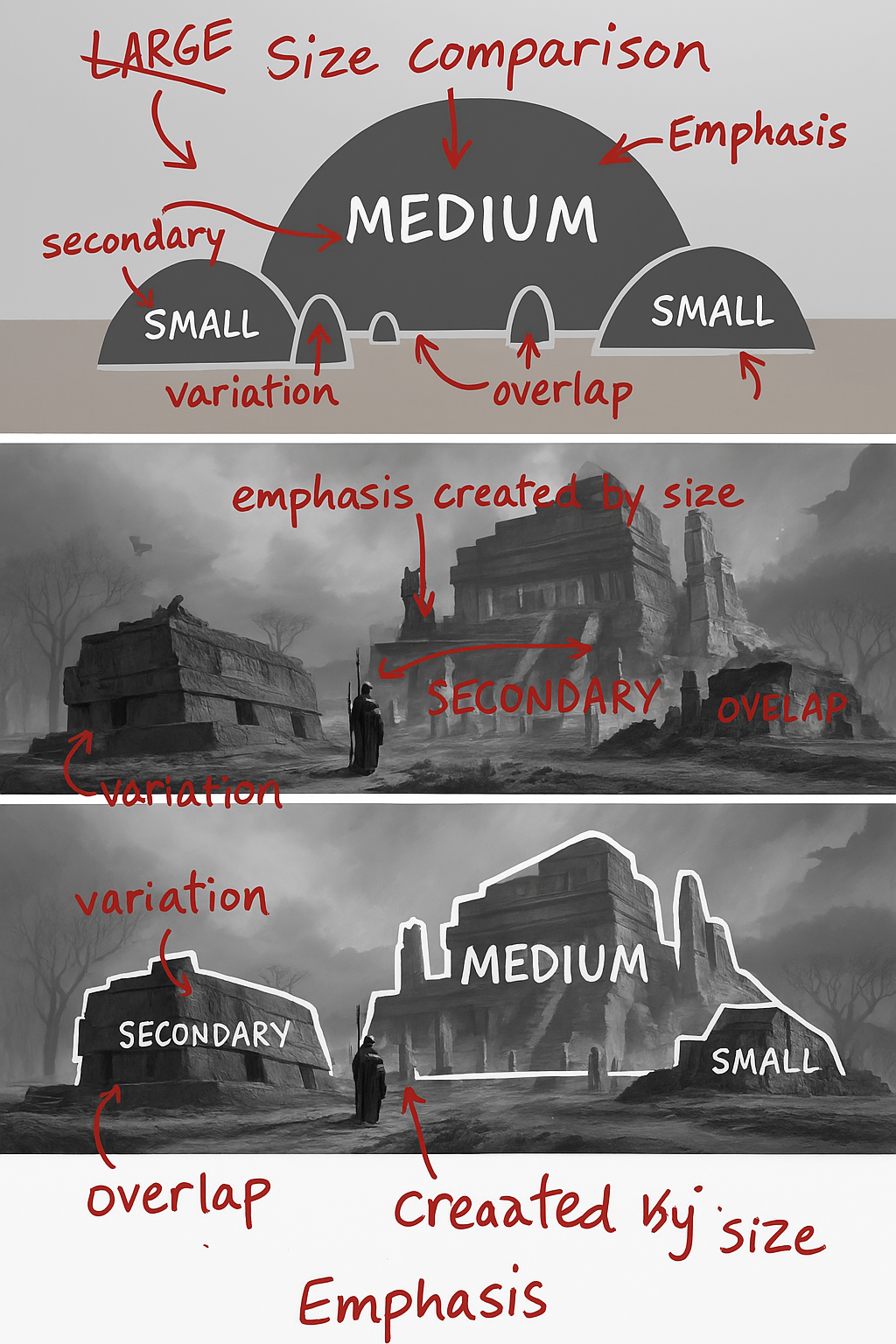
Example of using size contrast to emphasize the subject
1. Using Size Relationships to Highlight Your Subject
Create visual impact through size differentials by:
- Making your subject noticeably larger than surrounding elements
- Minimizing environmental elements to accentuate your subject
For example, classic scenes in films like "Dune" effectively use size contrast to create memorable visual impact.
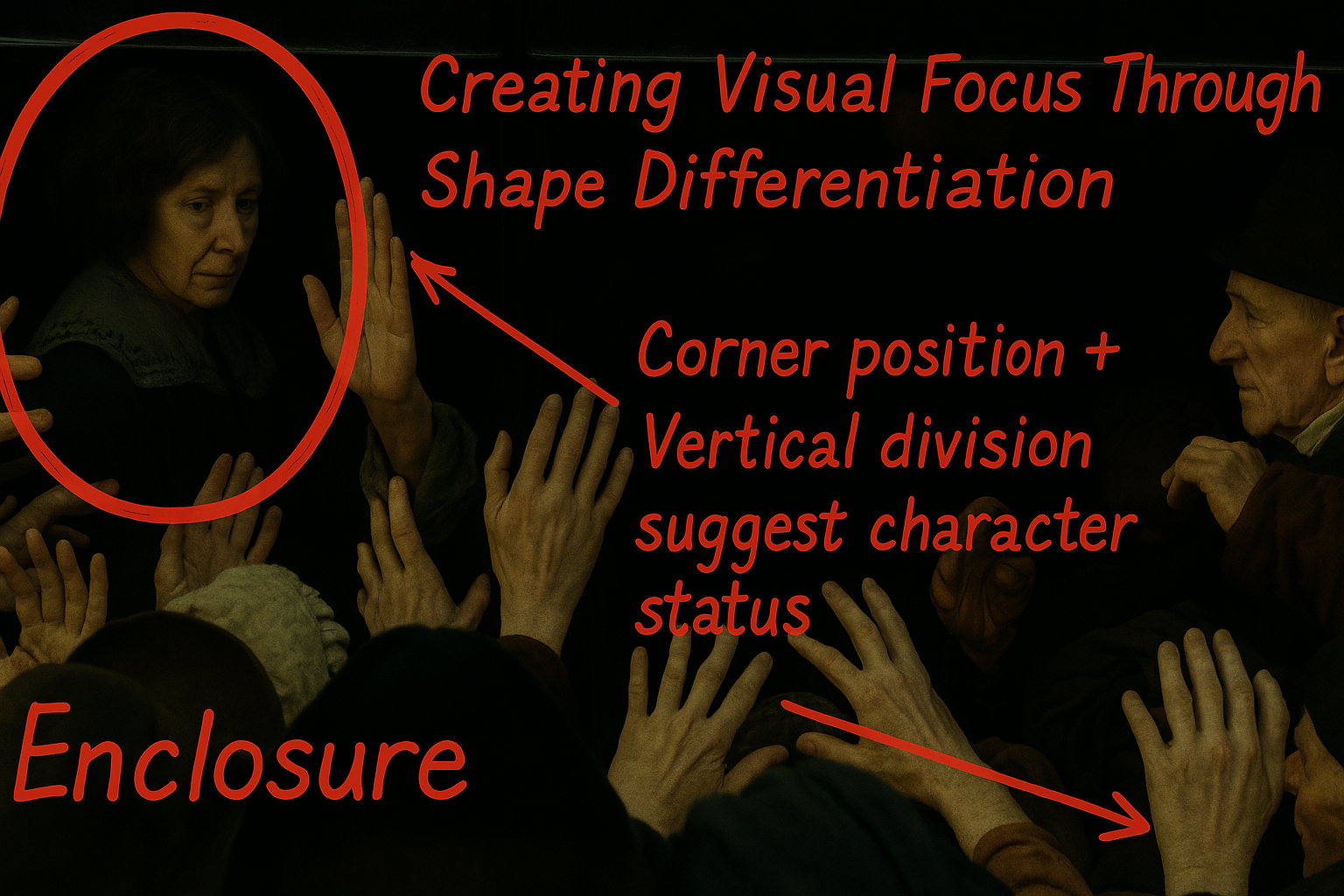
Example of how different shapes draw attention
2. Creating Visual Focus Through Shape Differentiation
When your subject's shape contrasts distinctly with its surroundings, it immediately draws the viewer's eye. Consider the striking effect of a single person sitting among a row of empty chairs.

Example of using color contrast to create visual impact
3. Using Color Contrast for Visual Impact
Color is a powerful compositional tool. Try these approaches:
- Place highly saturated colors in low-saturation environments
- Use complementary colors to create striking contrasts
- Introduce an unexpected color element within a uniform color scheme
Think of the classic "red dress in a black and white scene" technique used in film and photography.
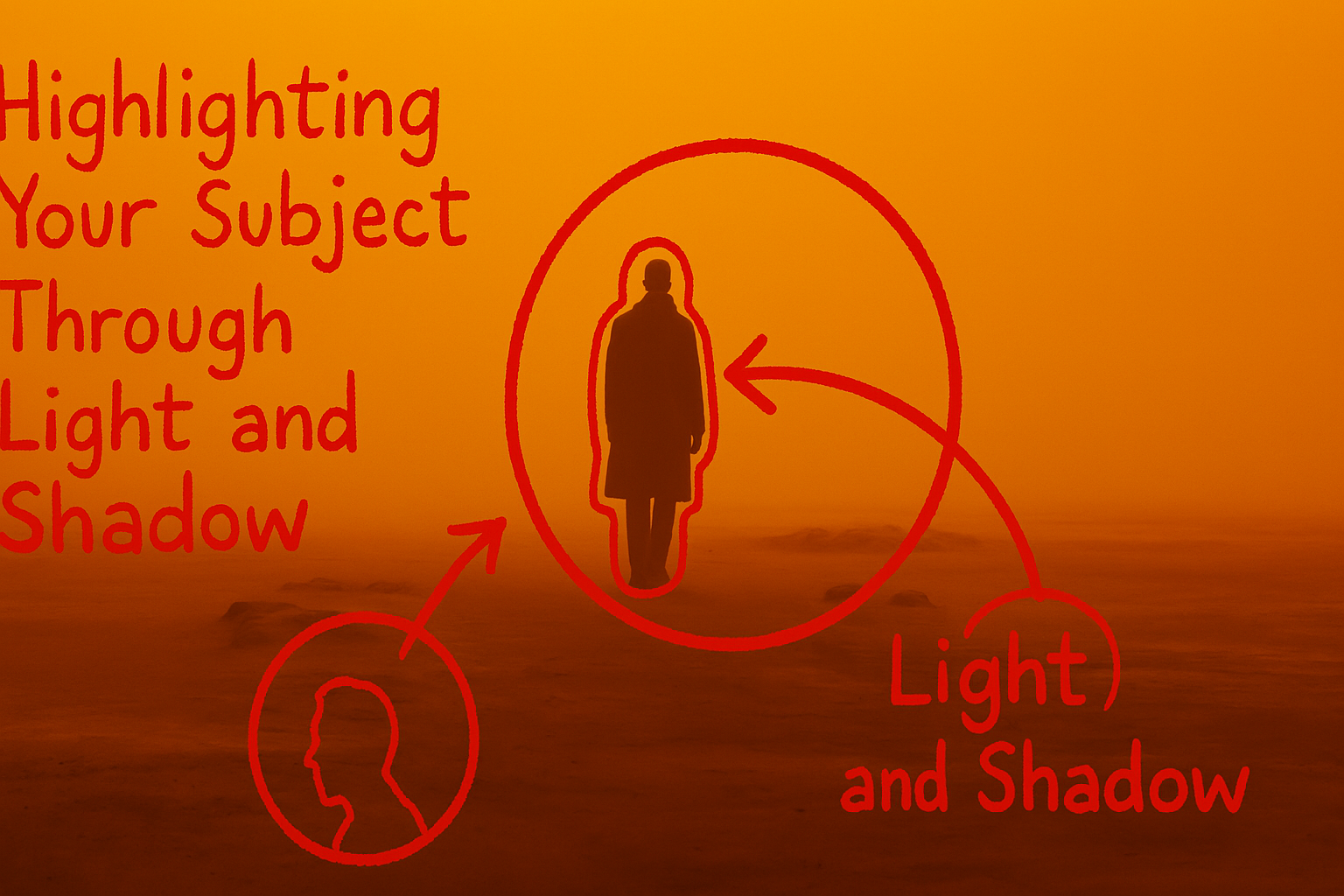
Using light and shadow to emphasize the subject
4. Highlighting Your Subject Through Light and Shadow
Light manipulation can effectively emphasize your subject in two primary ways:
- Light-shadow contrast: Like the silhouette effects in "Blade Runner"
- Selective lighting: Precisely controlling light to illuminate only your subject
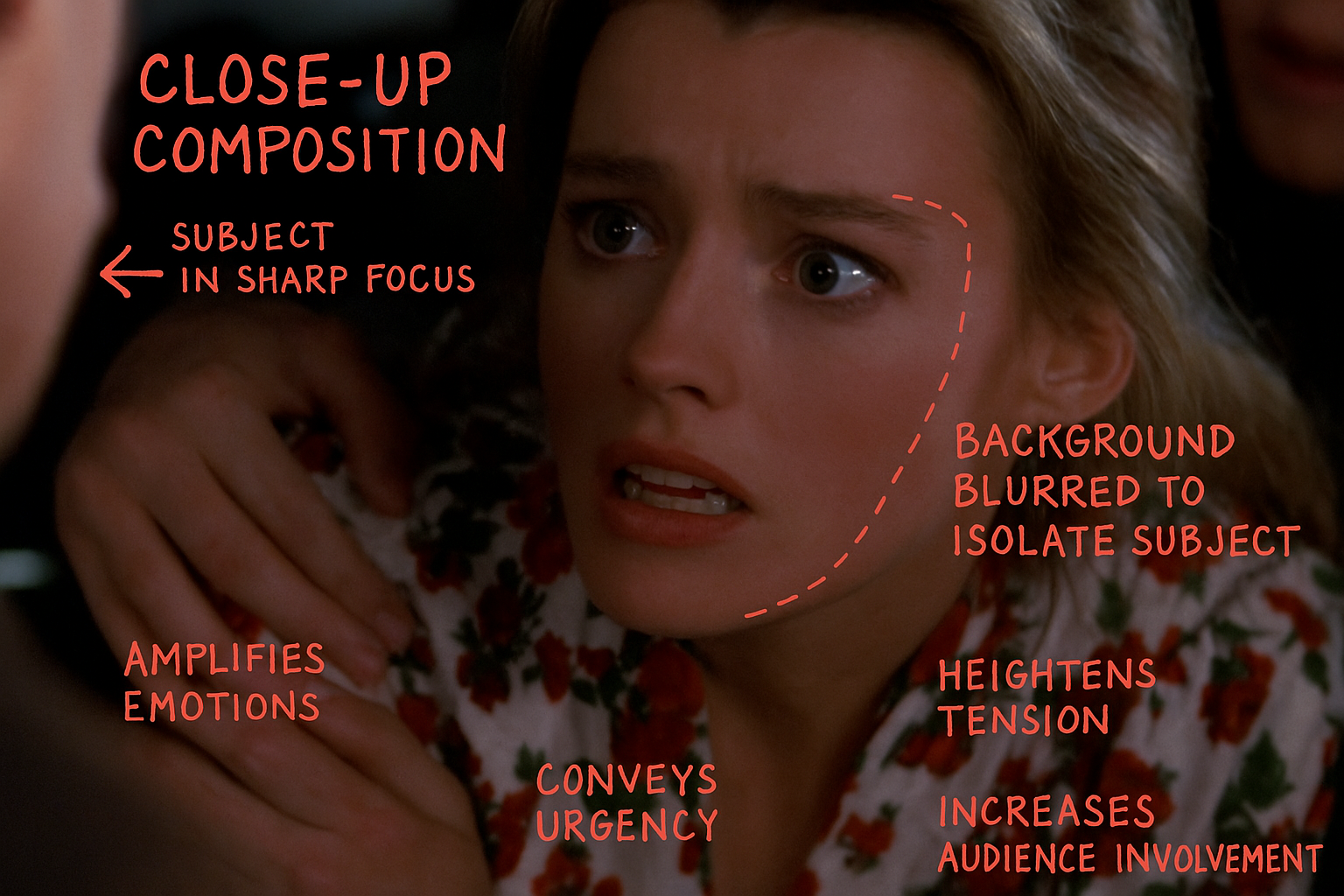
Using focus contrast to draw attention to the subject
5. Using Focus to Create Depth and Emphasis
Utilize your camera's depth of field to keep your subject sharp while blurring the background. This technique immediately draws attention to your main subject, as seen in many professional portrait photographs.
7 Classic Photography Composition Techniques That Work
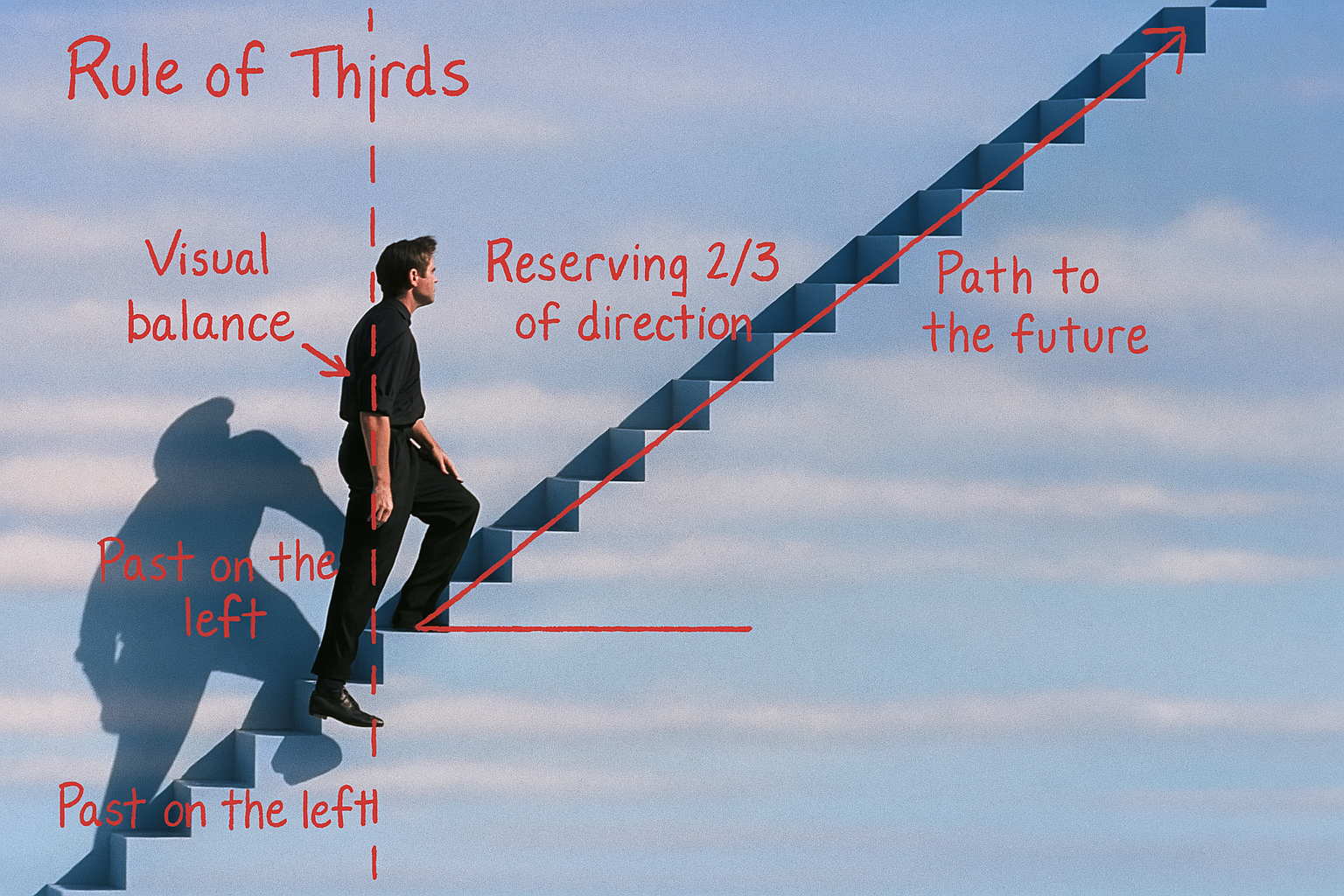
The rule of thirds grid helps create balanced, dynamic compositions
1. The Rule of Thirds
Divide your frame into a 3×3 grid and position key elements along these lines or at their intersections. This creates visual harmony and adds dynamic energy to your images.

Perfect symmetry creates a sense of balance and harmony
2. Symmetrical Composition
Emphasize balance and precision by creating mirror-like symmetry in your frame. This technique works particularly well for architectural shots, reflections, and scenes where you want to convey stability and formality.
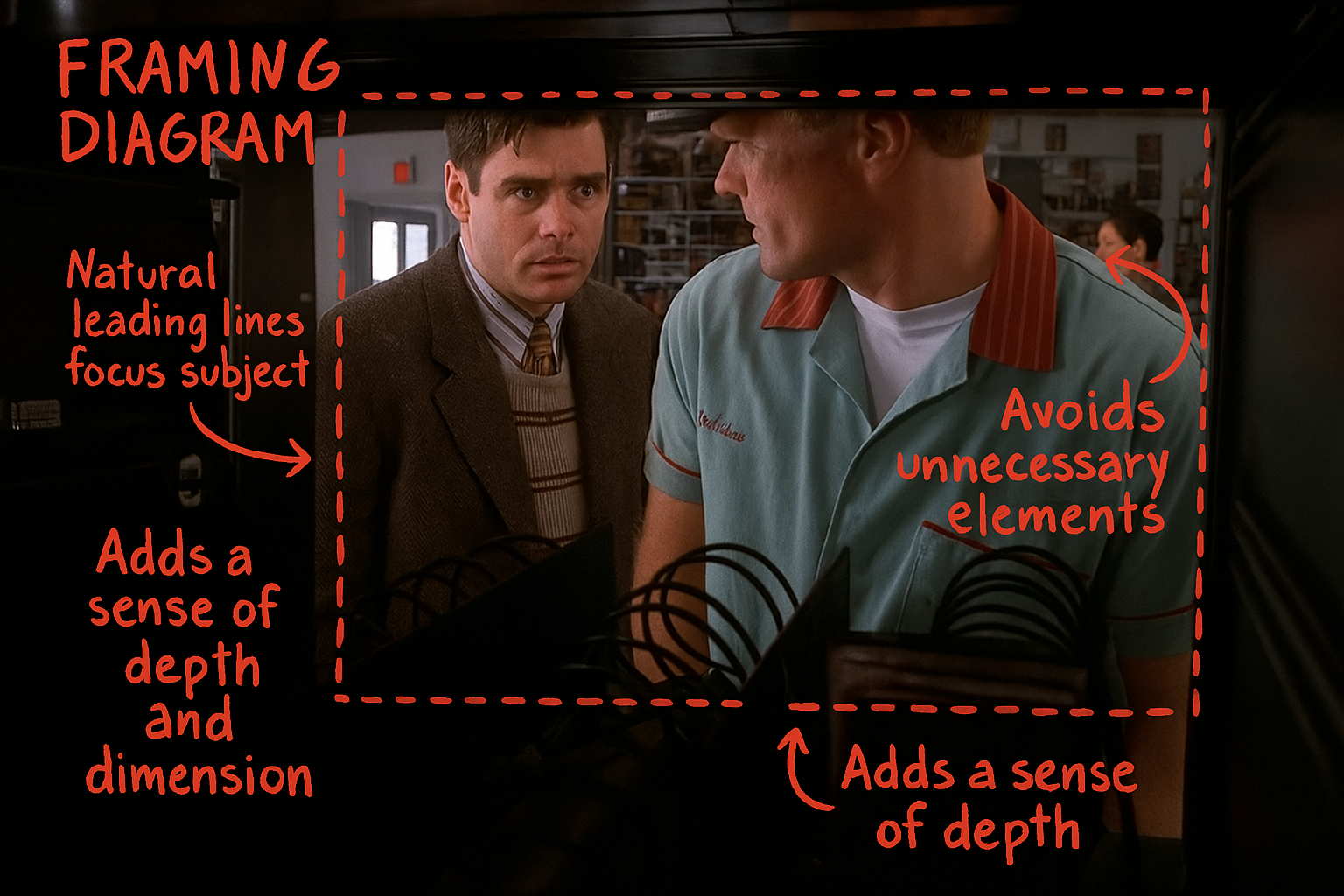
Using natural elements to create a frame within your photograph
3. Framing Composition
Use natural or human-made elements to create a frame within your photograph, drawing the viewer's attention directly to your subject. Doorways, windows, tree branches, and archways all make excellent framing devices.
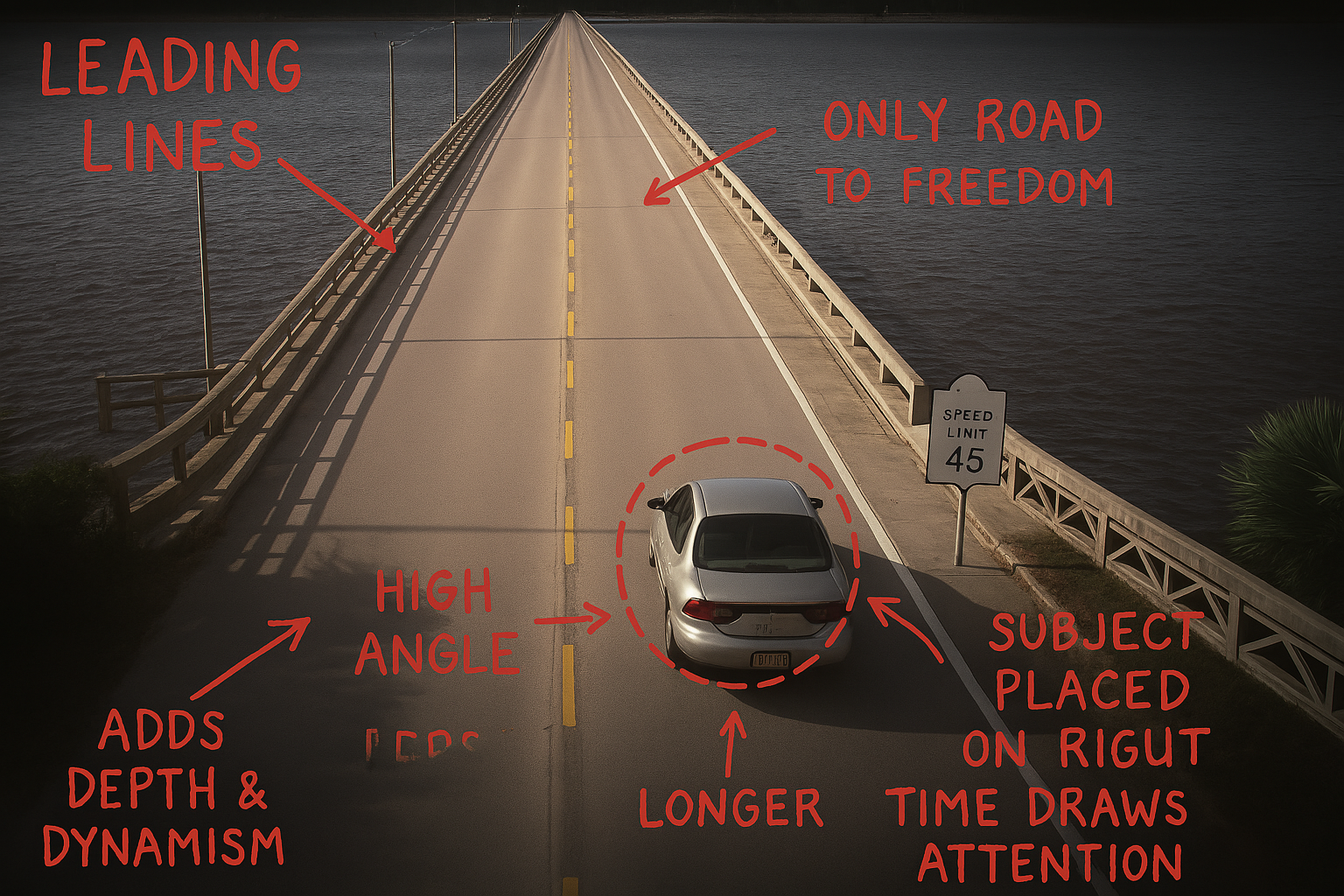
Leading lines guide the viewer's eye through the photograph
4. Leading Lines Composition
Incorporate natural lines like roads, rivers, or architectural features to guide the viewer's eye toward your main subject. This technique adds depth and creates a natural visual journey through your image.
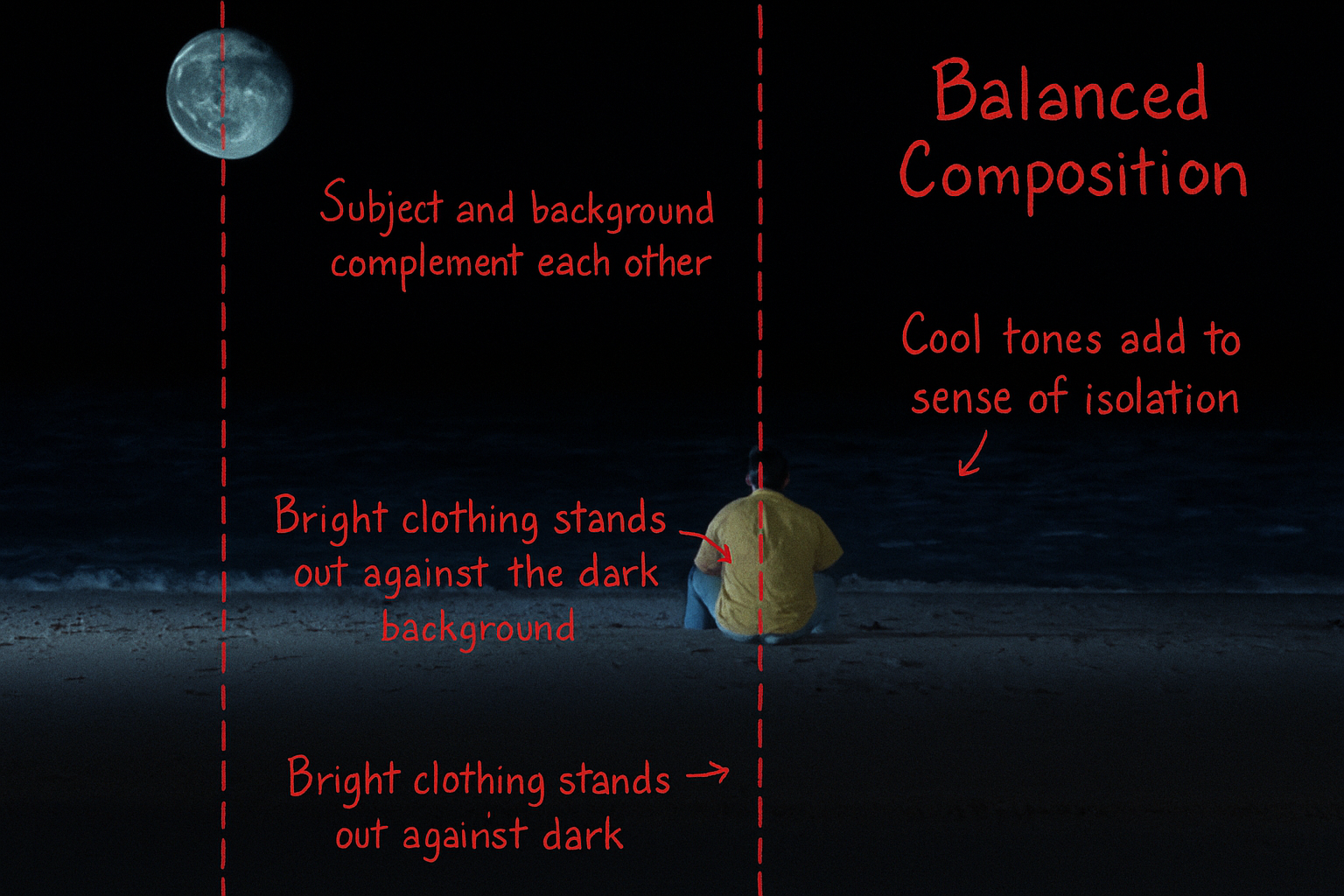
Achieving visual balance through element distribution
5. Balanced Composition
Distribute visual weight evenly throughout your frame to prevent imbalance. Remember that balance doesn't require symmetry—elements of different sizes, colors, and shapes can achieve visual equilibrium when thoughtfully positioned.
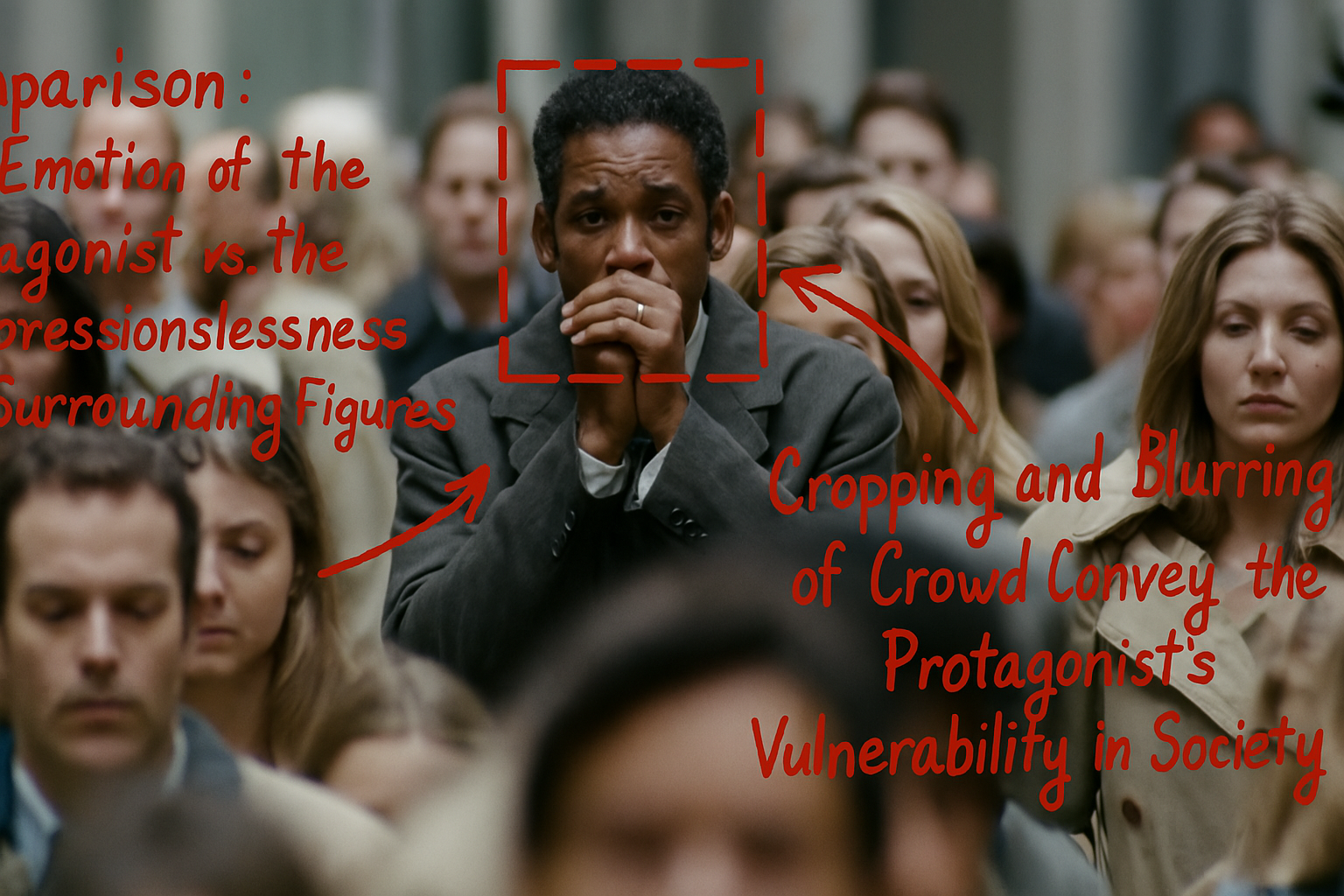
Densely packed elements create visual interest and energy
6. Densely Packed Composition
Arrange elements close together to create a sense of abundance and visual richness. This approach works well for busy street scenes, markets, or any setting where you want to convey energy and vibrancy.
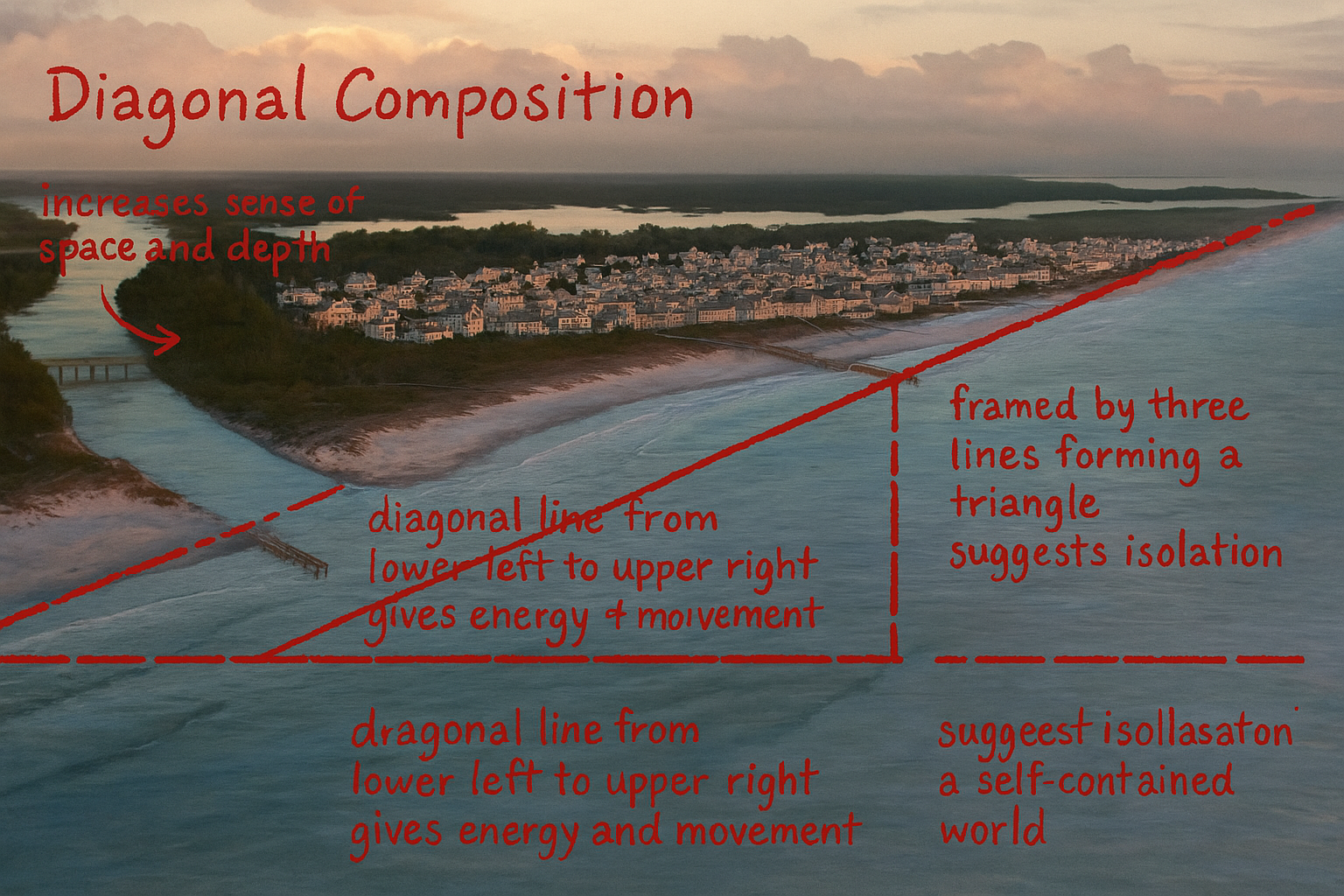
Diagonal lines create movement and energy in photographs
7. Diagonal Composition
Use diagonal lines to create dynamic energy and movement in your photographs. This technique guides the eye from one corner of the frame to another, adding a sense of motion and depth to static images.
Core Principles of Effective Composition
1. The Balance Principle
Balance in composition doesn't require symmetry—it's about equalizing visual weight across your frame. For example, you might place a large subject on one side of your image and balance it with smaller elements on the opposite side, using the rule of thirds as a guide.
2. Object Placement: Grouping and Distribution
Consider these two complementary approaches:
- Grouping: Cluster elements around your subject to establish a visual center
- Distribution: Carefully place supporting elements throughout your frame to avoid empty spaces while maintaining harmony
Tools like the golden spiral or rule of thirds grid can help improve your element placement.
3. The Substitution Principle: Creating Originality
When working within classic compositional frameworks, creativity comes from substituting unexpected elements. Try applying a composition typically used for seascapes to urban or forest settings, creating fresh and original work while maintaining proven compositional strength.
Practical Tips for Mastering Photography Composition
To achieve successful compositions in your photography:
- Clearly identify your visual subject and skillfully apply techniques involving size, shape, color, light/shadow, and focus
- Implement classic composition methods to guide viewers' eyes precisely toward your subject
- Master the balance principle while avoiding rigid symmetry
- Apply grouping and distribution principles for thoughtful element arrangement
- Use the substitution principle to spark creativity and break free from formulas
Composition is the perfect blend of technical skill and artistic vision. Only through consistent practice and experimentation will you truly master these principles and develop your unique style.
We hope this guide helps you achieve breakthroughs in your photography. Remember to tag us in your compositions on social media—we'd love to see how you apply these techniques!
Ready to add professional watermarks to your beautifully composed photos? Try our free online watermark maker to protect and brand your work with elegant camera-style overlays.
